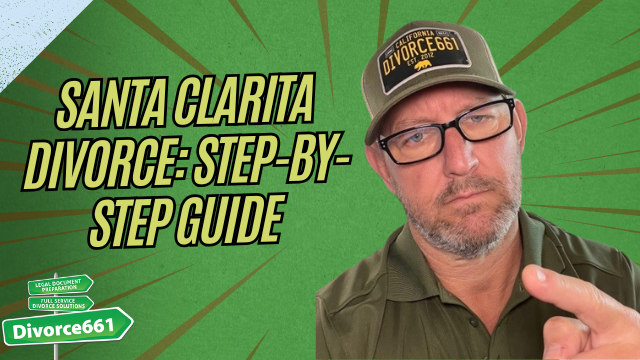Santa Clarita Divorce: Step-by-Step Guide | Santa Clarita Divorce
If you live in Santa Clarita and are thinking about divorce, the process can feel overwhelming. This guide breaks the California divorce process down into clear, manageable steps so you know exactly what to expect from start to finish.
Overview
California divorce follows a predictable sequence of steps. Whether you plan to resolve everything amicably or anticipate disputes, these are the core milestones: filing paperwork, serving your spouse, exchanging financial disclosures, reaching a settlement or moving forward by default, and submitting a final judgment for court approval.
Step 1: File the initial paperwork
The process begins by filing the required court documents. The essentials are:
- Petition for dissolution of marriage
- Summons
- UCCJEA form if you have children under 18
After filing, the court assigns a case number. Keep that number handy for all future filings and communications.
Step 2: Serve your spouse
Once the documents are filed, your spouse must be officially served. Service must follow California rules so the court will accept it. After service, a proof of service form must be filed with the court to confirm your spouse received the paperwork.
Step 3: Exchange financial disclosures
Both spouses are required to exchange financial information. This step is mandatory even if you are in full agreement. Typical disclosures include:
- Income information such as pay stubs and tax returns
- Bank and investment account statements
- Details of real estate, vehicles, and other assets
- Credit card statements and debt information
- Monthly expenses and budgets
Accurate and complete disclosures protect both parties and help the court or the parties reach a fair settlement.
Step 4: Reach a settlement or request a default
After disclosures, you have two main paths:
- Settlement: If you and your spouse agree on division of property, custody, support, and other issues, you can submit a written agreement to the court. A signed marital settlement agreement or judgment outlines the terms and can be finalized without trial.
- Default: If your spouse does not respond or fails to participate, you can request a default judgment. Moving forward by default lets the case proceed without your spouse’s active involvement.
Both routes avoid a contested trial and can significantly speed up the process when handled correctly.
Step 5: Submit your judgment
Once terms are agreed or a default is appropriate, the final step is filing the judgment and any accompanying agreements with the court. When the court signs off on the judgment, the divorce is final.
We recently helped a couple in Santa Clarita complete their entire divorce from start to finish in under 6 weeks without ever stepping foot in court.
Example timeline
Timelines vary by case complexity, court scheduling, and whether both parties cooperate. For amicable, well-documented cases, the process can be completed in a matter of weeks. In more contested matters, it can take months or longer. The example above demonstrates that with cooperation and complete paperwork, a fast resolution is possible.
How a flat fee, full service approach works
A flat fee divorce service handles the administrative and procedural work so you do not have to navigate the courthouse or complicated forms yourself. Typical services include:
- Preparing and filing all court forms
- Coordinating service and filing proof of service
- Drafting financial disclosures and settlement agreements
- Preparing and submitting the final judgment
- Remote or local support options with no court appearances required
This approach is designed for amicable cases where both parties want an efficient, predictable process without repeated attorney billing or multiple court visits.
Practical tips before you start
- Gather key documents early: tax returns, pay stubs, bank statements, mortgage documents, retirement account statements, and credit card bills.
- Be transparent in disclosures. Full disclosure prevents delays and potential later challenges.
- Decide whether you want to pursue an amicable settlement or need to prepare for a contested process.
- Consider a flat fee service if you want predictable costs and fewer court appearances.
- Use a free consultation to review your situation and confirm the best path forward.
Common questions
Is exchanging financial disclosures required?
Yes. California requires both parties to exchange financial disclosures, even when they agree on everything.
Can a divorce be completed without going to court?
Yes. Many divorces that result in a signed agreement or a default can be finalized without any court appearance.
What happens if my spouse does not respond?
If your spouse fails to respond after proper service, you can move forward by requesting a default judgment and finalize the divorce without their participation.
Next steps
If you are in Santa Clarita and ready to begin the divorce process, scheduling a free consultation will help you understand your options and next steps. A full service flat fee option can handle filing, service, agreements, and the final judgment so you can avoid the courthouse and confusing paperwork.
Visit divorce661.com to schedule your free consultation and get started.

